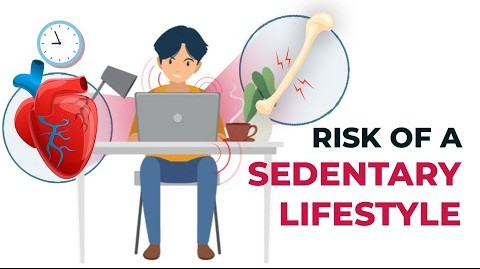
Follow WOWNEWS 24x7 on:

India is witnessing a worrying surge in heart disease cases among its young and middle-aged professionals, with sedentary, screen-heavy work culture emerging as a critical contributor. In an era where digital devices dominate daily routines and prolonged sitting is common, medical experts warn that the "always-on" lifestyle is silently fueling a heart health crisis.
Key Highlights of the Emerging Cardiac Challenge:
Sedentary Behavior as a Cardiac Risk: Extended sitting, particularly in urban desk jobs, is raising the risk of major heart events. Recent studies note a significant association between prolonged inactivity and increased adverse cardiac outcomes over a few years.
Screen Time Overload: With Indians averaging over 7 hours of daily screen exposure, the health effects include elevated resting heart rates, hypertension, and disrupted sleep patterns rooted in chronic digital stress.
Physiological Impact of Stress and Cortisol: Persistent stress from work and digital overload raises cortisol levels, detrimentally affecting blood vessels, increasing abdominal fat, and destabilizing cardiovascular health.
Early Onset in Younger Professionals: Heart attacks and cardiac issues increasingly affect people in their 20s, 30s, and 40s, challenging the prior notion of heart disease as primarily an older adult concern.
Lifestyle and Work Culture Factors: Long working hours, lack of physical movement beyond occasional workouts, night-time digital engagement, and neglect of preventive health screenings intensify risks.
Corporate and Public Health Response: A growing call for workplace wellness programs, routine heart screenings, stress management initiatives, and public health policies targeting young populations.
Understanding the Sedentary-Screen Heart Disease Link:
Cardiac surgeon Dr. Shriram Nene highlights how sedentary lifestyles, intensified by India's booming IT and corporate sectors, act like a silent cardiac risk comparable to smoking. While scheduled gym sessions help, the bulk of the day spent sitting negates these benefits, as inactive muscles fail to regulate glucose and vascular health effectively. The widespread "notification tachycardia" phenomenon—where constant alertness and stress keep the heart rate elevated—is a direct outcome of relentless digital engagement.
Beyond physical inactivity, chronic stress impacts cardiac health through biochemical pathways. Elevated cortisol impairs nitric oxide availability essential for blood vessel function, promotes harmful fat deposits around vital organs, and primes the heart for stress-related damage. Indian cohort studies link high cortisol with doubled risk of early-stage hypertension and lipid abnormalities.
The Changing Demographics of Cardiac Risk:
Where heart disease once predominantly affected older adults, today’s trend reflects vulnerability in young professionals, with over half of heart attack deaths occurring under age 50 and an alarming number below 40. Urban work-from-home habits, extended screen use after hours, erratic eating patterns, and reduced physical activity form a dangerous synergy increasing cardiovascular risk.
Health Consequences in the Workplace:
Many employees work 14-hour days with minimal movement, often accompanied by unhealthy habits like smoking and poor diet. This leads to increased cases of hypertension, diabetes, obesity, and ultimately coronary artery disease. Orthopedic issues such as back pain also arise from prolonged sitting but signify broader systemic health decline.
Recognizing the threat, health experts urge companies to adopt wellness programs beyond episodic interventions—embedding continuous care and digital health tools that promote physical activity, stress reduction, and regular screening. Unfortunately, only a fraction of Indian employers currently offer routine health checks, leaving most workers at risk without timely detection or prevention.
Towards a Heart-Healthy Work Culture:
Key strategies for mitigating this silent epidemic include:
Encouraging frequent breaks from sitting with short walks and stretching
Reducing after-hours digital engagement to restore natural rest and lower stress hormones
Instituting regular heart health screenings and biometric monitoring at workplaces
Promoting holistic wellness programs that address physical, mental, and emotional health
Integrating traditional practices like yoga and meditation to counterbalance digital overload
Educating employees about risks of sedentary behavior and fostering a culture valuing balanced work-life rhythms
The government is also responding through initiatives targeting early cardiac risk detection, emergency response training, and lifestyle disease awareness campaigns to curb the growing cardiovascular burden on the healthcare system.
Conclusion:
As India strides deeper into the digital age, the cost of sedentary, screen-heavy lifestyles is manifesting dramatically in rising heart disease among its young professional population. Combating this crisis requires a multi-pronged approach involving individuals, employers, healthcare providers, and policymakers to transform workplace cultures and personal habits. Building awareness of the dangers of prolonged sitting, excessive screen time, and chronic stress is the first step toward safeguarding the heart health of millions and securing a healthier, more productive future for the nation.
Source: India Today, Times of India, The New Indian Express, Hindustan Times

